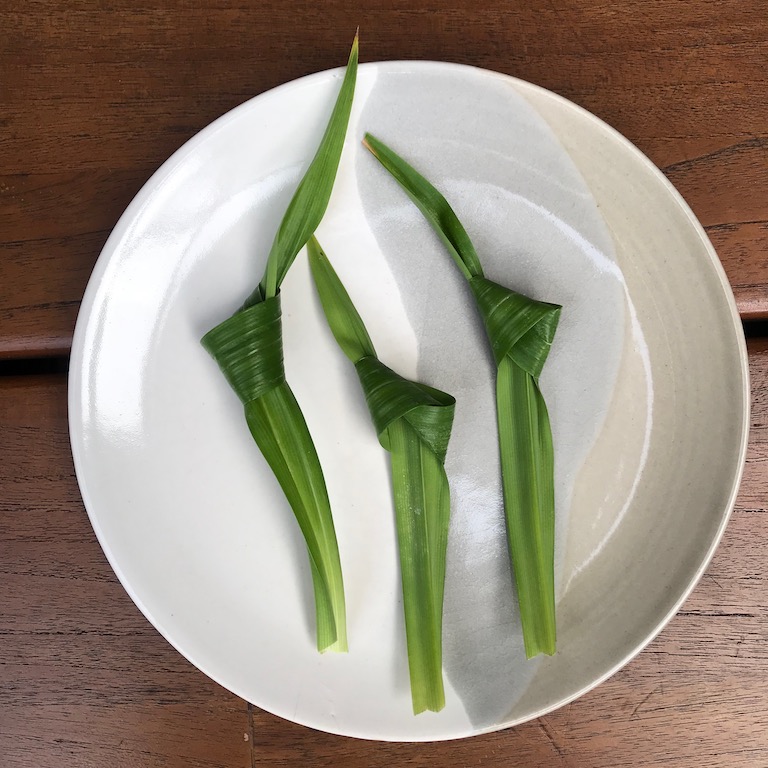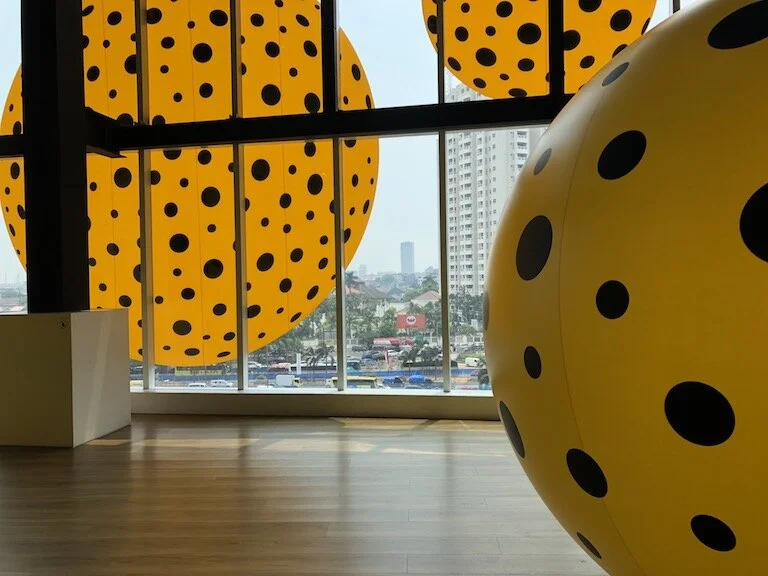How to Make Authentic Indonesian Ginger Tea - Wedang Jahe
Originating in Central and East Java, Wedang Jahe is a popular drink which can be served either hot or cold.
Traditionally made from a simple combination of fresh ginger and rock sugar (or palm sugar in this case) along with hot water, Wedang Jahe is most frequently consumed in the Wet Season when it is believed that the cooler weather brings about the onset of flu-like symptoms (‘masuk angin’).
It is indeed a comforting drink - one that I enjoy sipping hot, but equally enjoy drinking cold. With the addition of a handful of ice cubes, some mint leaves and a stick of lemongrass as a swizzle stick, you have the most refreshing health tonic to enjoy anytime!
So grab your ingredients and head to the kitchen. In no time your home will be filled with the beautiful aroma of traditional Indonesian spices and you will have the satisfaction of creating one of the most delicious Jamu recipes to share with family and friends.
Did you know? “Wedang” is a Javanese term meaning ‘hot drink’ and “Jahe” means ‘ginger’.
Ingredients
150 grams fresh ginger peeled, bruised and sliced
280 grams of palm or coconut palm sugar - roughly chopped
3 lengths of lemongrass, bruised and chopped
3 pandan leaves (tied)
1 Tb black pepper corns
6 cardamom pods (cracked to release flavour)
12 cloves
1.5 Litres of fresh water
The staple ingredients for traditional Wedang Jahe
Preparation of Ingredients
Peeled ginger can be stored in an airtight container in the fridge for a few days
Before making your Wedang Jahe, be sure to bruise your lemongrass to release the oils
Crack open the cardamom pods before adding to the pot to release the seeds
cardamom pods
Method
1. In a non-stick pan, dry fry the ginger slices until fragrant.
2. Transfer ginger into a large saucepan and add all other ingredients.
3. Bring to boil then cover pot and reduce heat, continuing to simmer for a minimum of 5 minutes, allowing sugar to dissolve. This will also allow the flavours to infuse.
4. Remove from heat and allow Wedang Jahe to steep for a further 5 — 10 minutes.
5. Strain and either serve immediately or allow to cool then transfer to sterilised bottles.
6. Keep in fridge for up to 5 days.
Cook’s Notes
For a second batch of Wedang Jahe using the same ingredients - After straining, return all solid ingredients to saucepan and add 3 quills of cinnamon. Add a further 1 litre of water and a couple of spoons of palm sugar or coconut nectar sugar. Return to the boil and repeat steps 3 - 5 as above.
Why not try making Wedang Uwuh? The recipe for Wedang Uwuh was first brought to our attention by one of our AJB Followers after I posted a photo of Wedang Jahe ingredients on our AJB Instagram. She asked us if we had tried making Wedang Uwuh. This prompted us to explore the recipe further and we realised that the simple recipe for Wedang Jahe can be easily adapted to create Wedang Uwuh by the inclusion of secang bark, cinnamon and nutmeg (either grated or powder).
Secang bark, nutmeg and cinnamon quills can be added to the pot when making Wedang Jahe. The result is known as 'Wedang Uwuh'
As previously mentioned, in Javanese, ‘Wedang’ means drink, but did you know that ‘Uwuh’ means trash? So, Wedang Uwuh means “trash drink”. It goes by this name as some of the ingredients fall from the trees and are therefore considered ‘trash’.
Always adjust the flavour to suit you - Traditionally many Jamu recipes are heavy on the sugar. This is especially so for Wedang Jahe. Once you've made this recipe a few times, you'll get a feel for how much sugar suits your palate. Feel free to tweak the recipe and make it your own.
Chopped gula merah (palm sugar)
Create your own Jamu Kit - After you've made Jamu a few times, you'll realise that there are quite a few dry ingredients that you need to have on hand. These include palm/coconut sugar, cinnamon quills, cloves, nutmeg, black peppercorns, secang bark (optional). Why not build up a kit, storing your ingredients in air tight jars? Keep them in a cool,dry place and you'll have the base for many jamu recipes always available.
Storing dried spices in airtight glass jars
5 Perceived benefits of drinking Wedang Jahe
1. Wedding Jahe brings warmth to the body, especially important during the Wet Season as it acts as a vasodilator to aid in blood circulation.
2. The addition of lemongrass relieves pain including muscular pain and headache.
3. Relieves symptoms of cough and fever.
4. Relieves nausea.
5. Relieves heartburn.
One of the things that most excites me about living in Indonesia is gaining an understanding of the various traditions across the archipelago.
In particular I am curious about the making of Jamu, which is mostly associated with Java. Here are a couple of other AJB Blog posts which include recipes for two popular (and easy to make) Jamu drinks. I hope you enjoy sipping them as much as I do!
About Jamu and How to Make Jamu Kunyit Asam
Recipe for Jamu Beras Kencur
Words: Jo Stevens Photography: a Journey Bespoke
A 'Jamu Gendong' or Jamu seller (almost always a woman) walks the streets of South Jakarta calling, 'Jamu' to notify her potential customers of her presence (Photography courtesy of AJB friend, Lucy Guest)




















